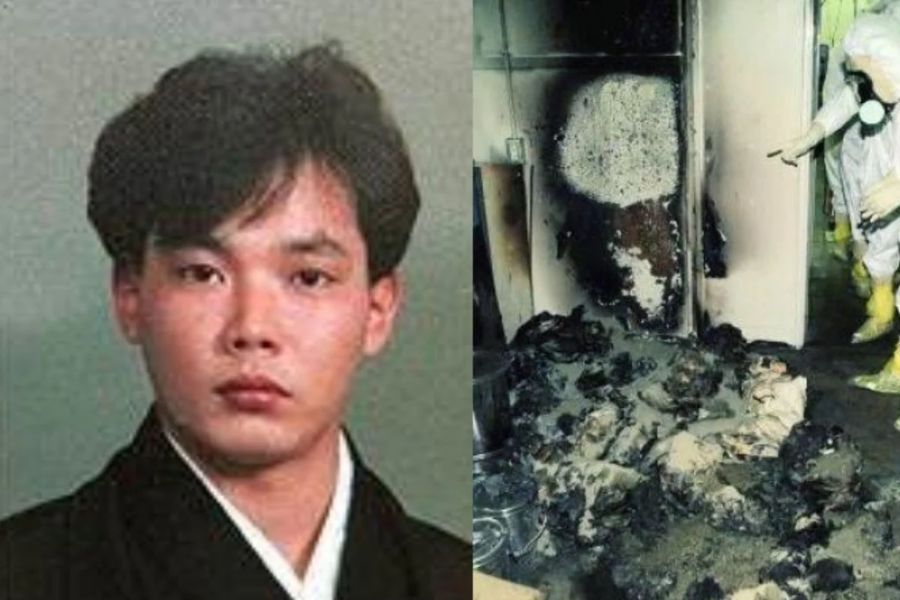Hisashi Ouchi face is a symbol of one of the most heartbreaking and tragic incidents in modern Japanese history. On September 30, 1999, a catastrophic nuclear accident at the Tokaimura nuclear facility led to the severe radiation poisoning of Ouchi and two of his colleagues. This incident not only changed the lives of those involved but also raised significant concerns about nuclear safety protocols in Japan. In this article, we will delve deep into Hisashi Ouchi's story, exploring the events leading to the accident, the aftermath, and the impact it had on nuclear safety regulations.
As we navigate through the details of Hisashi Ouchi's life and the unfortunate events surrounding him, it is essential to remember the human aspect of this tragedy. Ouchi was not just a victim; he was a person with dreams, aspirations, and a life that was irrevocably altered due to negligence in safety measures. We will also highlight the scientific and ethical implications of this incident, emphasizing the need for stringent safety practices in high-risk industries.
Through this comprehensive examination, we aim to provide a well-rounded understanding of Hisashi Ouchi, the accident, and its broader implications. Join us as we uncover the legacy of Hisashi Ouchi and the lessons learned from this unfortunate event.
Table of Contents
- Hisashi Ouchi Biography
- The Tokaimura Incident
- The Aftermath
- Impact on Nuclear Safety Regulations
- Hisashi Ouchi's Face and Legacy
- Conclusion
- Sources
Hisashi Ouchi Biography
Hisashi Ouchi was born in 1960 in Japan. He was a worker at the Tokaimura nuclear facility, where he was involved in uranium processing. Ouchi was known for his dedication to his work and was considered a reliable employee. Sadly, his life took a tragic turn during the nuclear accident in 1999.
| Name | Hisashi Ouchi |
|---|---|
| Born | 1960 |
| Occupation | Nuclear Facility Worker |
| Incident Date | September 30, 1999 |
| Status | Deceased |
The Tokaimura Incident
The Tokaimura incident occurred due to a series of safety violations and human errors. Workers at the facility were improperly handling uranium, leading to a criticality accident. This accident resulted in a massive release of radiation, affecting Ouchi and his colleagues severely.
Key events during the incident included:
- Improper mixing of uranium fuel.
- Lack of adequate safety protocols.
- Delayed response from emergency services.
The Aftermath
Following the incident, Hisashi Ouchi suffered from severe radiation sickness. His condition was critical, and he endured immense pain. Medical professionals faced challenges in treating him due to the extent of his injuries.
Ouchi's family and friends rallied around him, but the effects of radiation were devastating. He passed away on December 21, 1999, after nearly three months of suffering.
Impact on Nuclear Safety Regulations
The Tokaimura incident prompted widespread criticism of Japan's nuclear safety regulations. In the wake of the tragedy, several key changes were implemented:
- Stricter safety protocols for nuclear facilities.
- Enhanced training programs for nuclear workers.
- Increased public awareness regarding nuclear safety.
These changes were essential in restoring public trust and ensuring the safety of nuclear operations in Japan.
Hisashi Ouchi's Face and Legacy
The term "Hisashi Ouchi face" has come to symbolize the human cost of negligence in industrial safety practices. His story serves as a stark reminder of the importance of prioritizing safety in high-risk environments. Ouchi's face represents not only his personal struggle but also the collective responsibility to protect workers in hazardous industries.
Today, Ouchi's legacy continues to influence discussions around nuclear safety and ethics. His tragic story is often referenced in debates about the risks associated with nuclear energy and the importance of stringent safety measures.
Conclusion
Hisashi Ouchi's face is a poignant reminder of the consequences of negligence in nuclear safety. His story, while tragic, has led to significant changes in safety regulations that aim to prevent similar incidents in the future. By understanding the lessons learned from the Tokaimura incident, we can work towards a safer future for all workers in hazardous industries.
We invite you to share your thoughts on this topic in the comments section below. Your engagement helps raise awareness about the importance of safety in high-risk environments.
Sources




